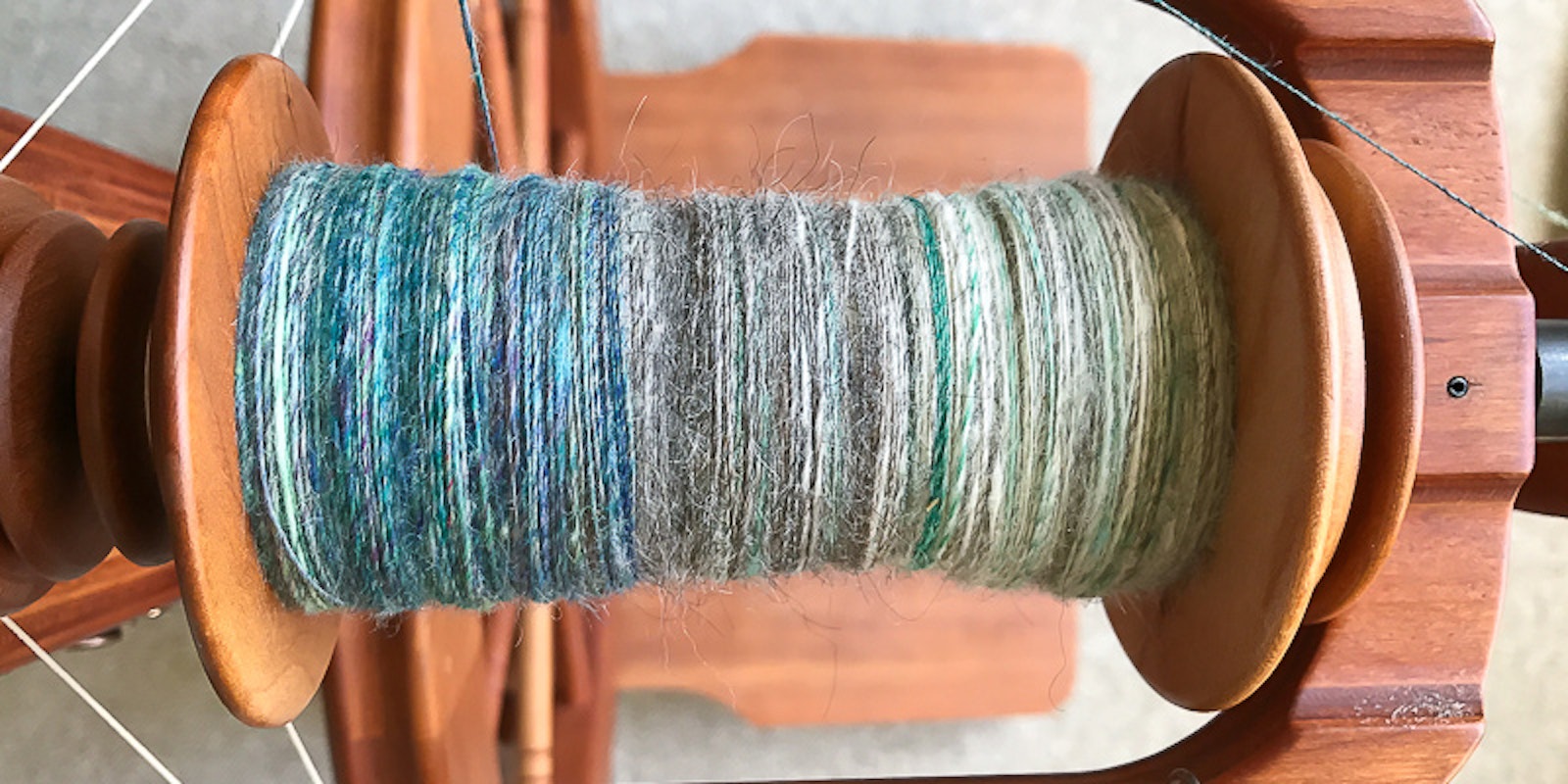Saving and recarding lovely leftover fibers is like finding a $20 bill in the pocket of a coat you seldom wear. We can give these bits and bobs new life and make something new.
Turn a pile of fiber bits and leftover locks into a fab spring cowl.
For this project, I assembled the batts into three matching gradients. You could organize this project in many ways, but this is an easy approach to carding, preparing, and spinning gradient yarn.
Prep and Spin
- Lay one of the batts flat on a smooth surface with the fluffy edges at top and bottom.
- Begin splitting a narrow strip off the batt from the top. Pull only a few inches off at a time, moving slowly along the edge until you are about three inches from the bottom. Stop! Now, begin a new strip from the bottom edge that is about the same size as the first, splitting toward the top. Continue working across the batt, alternating top strips and bottom strips. (It doesn’t matter how many strips you make.) This process creates a Z-shaped roving when you are done.
- I like to slightly pre-draft this new roving and wind it into a loose ball for spinning.
- For a batt with varied fibers and occasional tangles—we are using leftovers, after all—that I am spinning into a smooth-ish yarn, I often use a semi-woolen spinning method. This is where the twist is between your hands (woolen style), but my forward hand is drafting toward the wheel a few inches at a time. This helps to create fairly smooth, consistent singles, but the yarn retains enough air not to highlight unwanted texture when spinning with a moderate amount of twist.
I repeated these steps for all three batts, then plied the singles into a 3-ply gradient yarn. I chose the Kostbar cowl because it is a simple two-row pattern that can be worked until you are left with just enough yarn to bind off. Although the pattern was written for a worsted-weight yarn, I used a US#6 needle with my sportweight 3-ply yarn, because I wanted to create a fabric that is more open and lacy than the original. I love it!
Kostbar Cowl in handspun yarn.




